The June Weiss Schwarz announcement also came with a change in the ban list. We will be sharing the changes and giving our opinions as well.
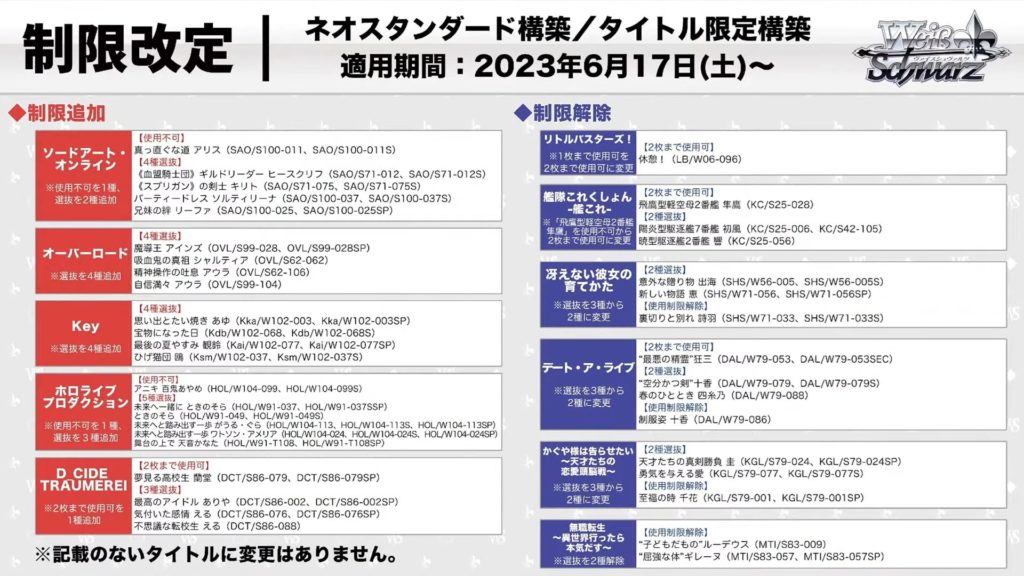
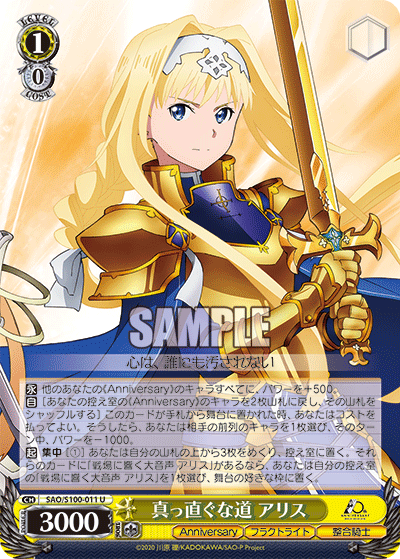
Alice spearheads the list as the first noteworthy ban. I don’t think it was anyone’s surprise to see the brainstorm banned. The power of cards in Weiss is limited by the level that the card is spawned at. Having a card to easily cheat the hard level requirements to play cards that shouldn’t be out so early in the game is a core issue. Alice is definitive proof of that, creating and summoning a monstrous board that can have a large snowballing effect. Furthermore, the fact that the brainstorm is spammable, shrinks your opponent’s board on play when you shuffle characters back and also acts as a global support makes this card extremely good even in the later game.
Spawning cards beyond your level has always existed in the game but never in as cheap of a capacity as Alice shown above. Even standby that cheats the level restrictions of the game has a steady cost of being on a climax and making the character come in rested. CHANGE is equally fair with its costs and early plays have hard conditions most of the time, but both these effects occur in the late game at level 2. Most cheated characters are usually either expensive to bring out or they come out in small amounts.
Even though Alice is a little inconsistent by being reliant on luck and milling three only, with the current tech cards in the game and the fact that she’s spammable, it’s not much of a requirement to ensure you get Alice’s spawn effect off. Alice’s 2/1 combo also makes sure to compensate for any stock and hand used to spawn her in the first place, and if your opponent can’t deal with them on the turn they are played or their following turn, she’s bound to snowball the Alice player’s resources to no end.
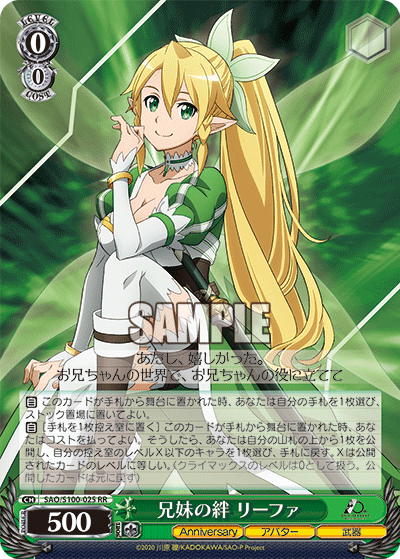
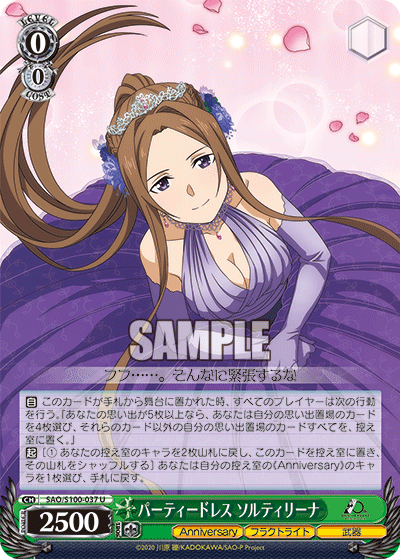
Beginning with the other limitations, Leafa’s Riko profile and Sortiliena are added to the existing pick list for SAO. Leafa is an already powerful profile that can turn excess hand into further stock advantage. Given how current SAO decks generate tons of hand advantage, she’s a really cheap way to churn that excess hand to stock to further push you ahead of your opponent while also filtering your hand for a very low cost. With Alice, she could consistently dump any unfortunate draws of 2/1 Alice into your waiting room to filter back into the deck with the brainstorm.
Sortiliena is an interesting card that lets you recycle characters from your waiting room to deck while giving you a salvage. Similar to Leafa, she also had a role in helping bring out 2/1 Alice in conjunction with the brainstorm; however, she would normally be played after Leafa would discard an Alice to force the 2/1 Alices into the deck. I do think she’s a bit of a mini-combo extender herself, working in conjunction with Leafa to place key cards back in the deck while giving you a salvage. That would be my assumption on why she’s on the pick list alongside Leafa.
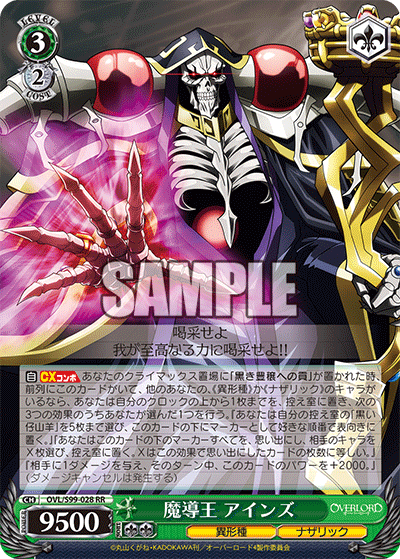

Picking between Ainz and Shalltear seemed to give quite a big hit to Ainz in terms of consistency and hand advantage. Personally, I think this was a great choice. Shalltear allowed Ainz to get out of many sticky situations, letting you accelerate to give you additional hand while also drawing key cards such as climaxes and Ainz’s event. I don’t think this came as a surprise to anyone.
Ainz will just need to find other options and play a little more carefully now that the player can’t simply force draw three for a single turn. This is also an inadvertent hit to Ainz’s event specifically now that you no longer have all the excess hand to burn out your opponent easily in a single turn.
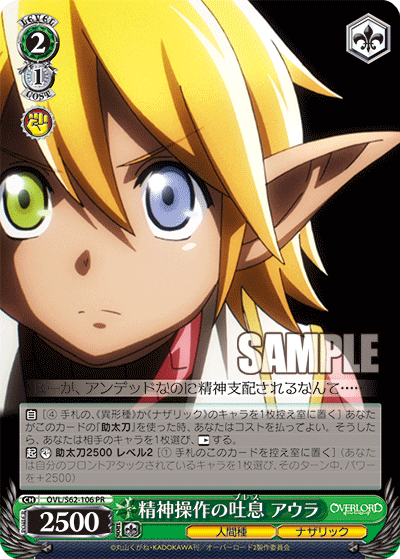
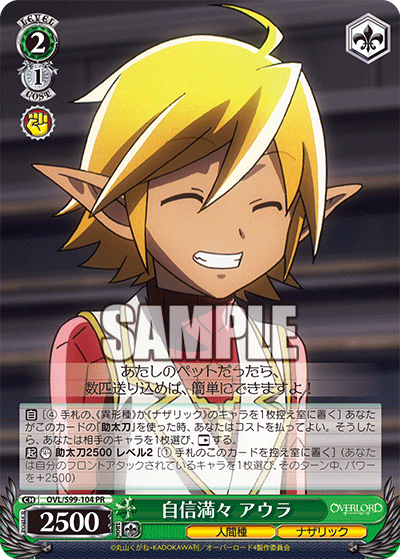
As for Aura’s ban, I’m not entirely sure about this one. I guess this would hamper Overlord’s reactive resources. Ainz is usually protected by his backrow support, so there would be no need to rest counter any character attacking him due to his invincibility. I would like to note that these two are the exact same counter with the same wording just different names. Given the heavy costs of Ainz’s late game, I’m rather confused myself about why this option is on a pick four list with that of Ainz and Shalltear.
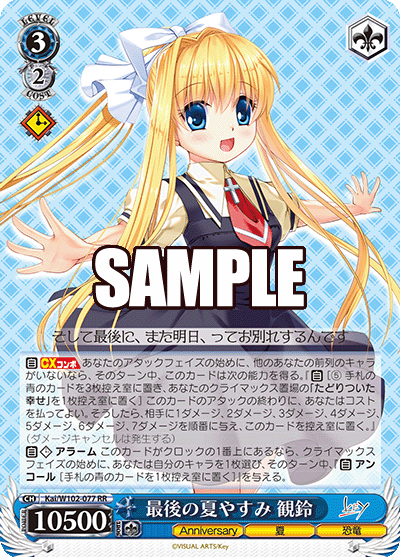
Misuzu joining the restrictions felt like an interesting take from Bushiroad’s side. The limitations for Key included tech cards that could potentially improve Misuzu’s kill power or improve Misuzu’s overall consistency.
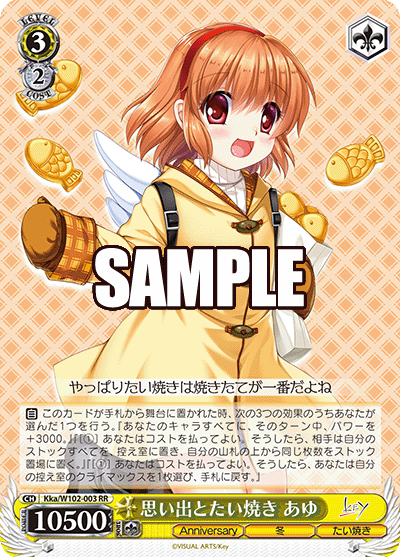
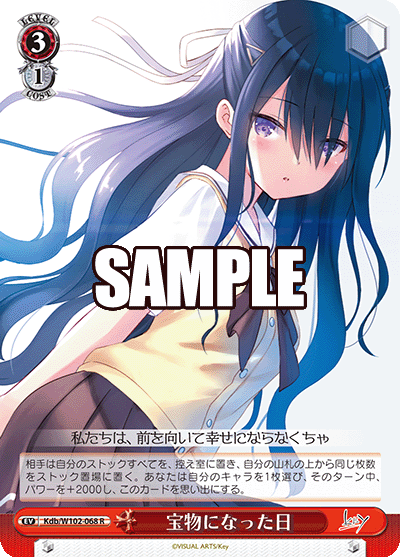
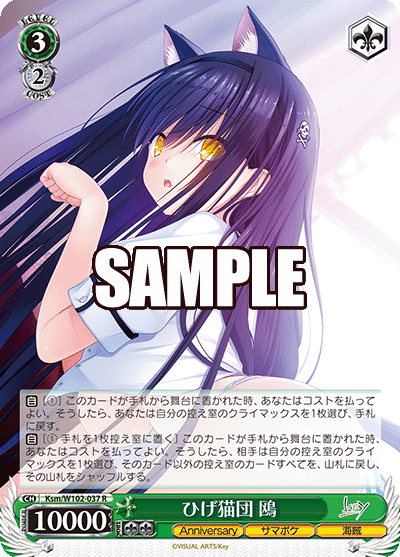
Kdb/W102-068R 宝物になった日
Ksm/W102-037R ひげ猫団 鴎
All three cards placed on the ban list interestingly share a similar effect: they all manipulate your opponent’s deck in some way or form. Ayu was a very powerful modal card being able to pump your field (least used ability), stock swap your opponent, or salvage a climax. Kyouko’s event is another stock flush that also pumps power or the turn while sending itself off to memory. Kanome is similar to Aru in that she can also help salvage a climax, but she can also force Fumio to refresh your opponent, yet, unlike Aru, you can use both of her abilities instead of picking only one.
It seems very obvious that all three cards here are used to mess with your opponent’s deck state. Given that Misuzu is contingent on the status of your opponent’s deck, forcing your opponent into a less wanted state, and punishing them for a better state of compression, would give Misuzu an edge in hopes of closing out the game. Now with all three cards gone, there is a hit in consistency with Ayu and Kanome leaving, making it more difficult to secure your climax at the end game and giving your opponent more of a fighting chance if they compressed their deck well.
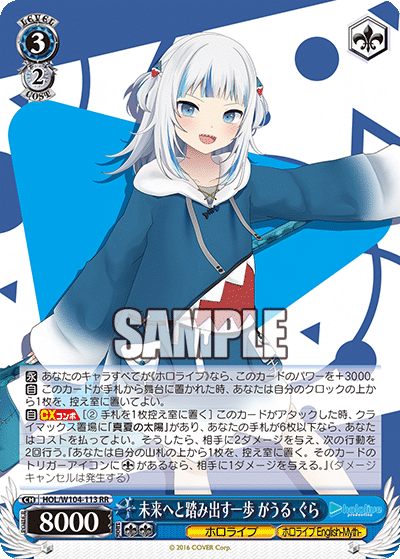
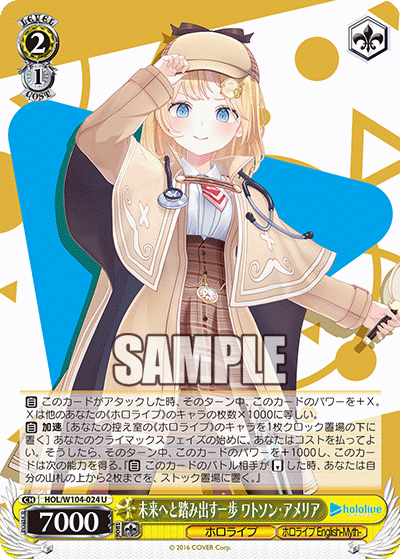
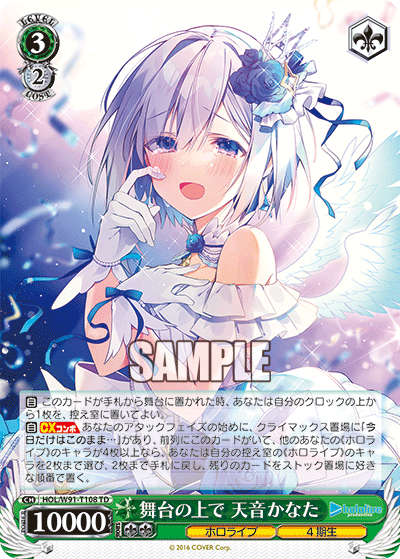
HOL/W104-024U 未来へと踏み出す一歩 ワトソン・アメリア (center)
HOL/W91-T108TD 舞台の上で 天音かなた (right)
There’s a clear pattern here with Amelia and Kanata’s limitations in the same deck with Gura. Amelia was a common choice inclusion due to her ability to turbo charge stock for Gura at the cost of a single point of life. Kanata performed a similar role at the cost of having to require a couple more pieces. The luxury of Amelia was that she allowed you to play the level 0 Azki climax while Kanata requires both her backup and her twin-soul (stock soul) climax. Kanata would play for a longer game and added further to Gura’s consistency, letting you either stock up or salvage pieces for Gura. Additionally, since Kanata’s change target is also a backup with a soul icon, they were both good targets to keep in the deck to ensure Gura’s additional pings would go off.
Seeing these bans, I feel as though Bushiroad is pushing another consistency hit to Gura. Everyone’s favorite shark will just have to work a little hard to prepare for her appearance in the late game.
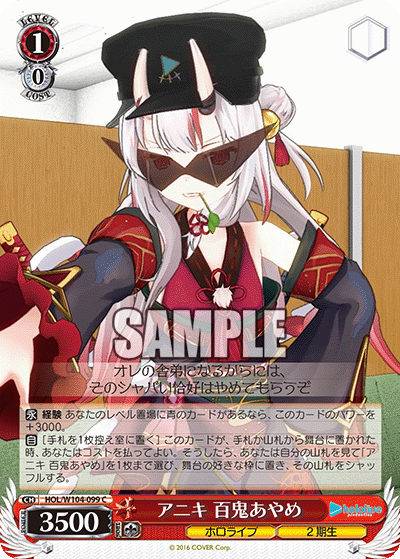
Ayame is now gone. It was a cute combo while it lasted, but I think for a plethora of reasons. including fear of future abuse, Ayame is restricted. It was interesting and cool to be able to spawn six attackers in a single turn, but given how many filter options and ways for Hololive to manipulate its own resources, it could potentially be looped indefinitely with a bit of luck. It was just safer overall to get rid of the little oni.
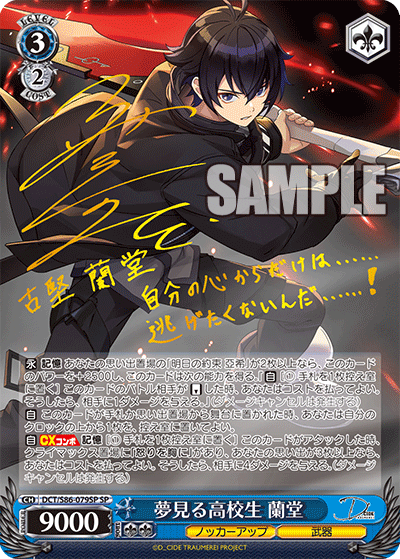
Randall’s limit both came as a surprise and interesting addition. D_Cide, despite its limitations, had still been a decent contender in the current game. Randall is just such a powerful finisher that can loop itself, providing consistent heals and ways to push for damage. Sending him to memory is not a permanent solution either (he wants to be there anyway). Randall’s hit will definitely lower the consistency of his deck.
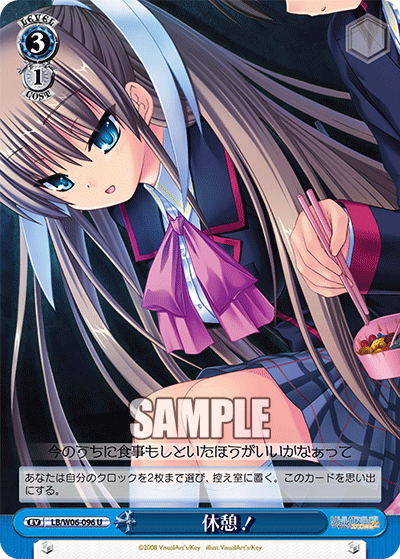
Limiting “Rest” to two copies adds to its consistency. Previously, more so of a gimmick as one of, Rest now has real potential to be played in decks. Although, given how much the game has changed from when Rest was a potential threat at stalling out the game, and how powerful finishers are, I’m not sure how much of an impact Rest will have. It’s a good card nonetheless, and I’d picture it will continue to show up in tri-colour decks and decks played around having a plethora of events.
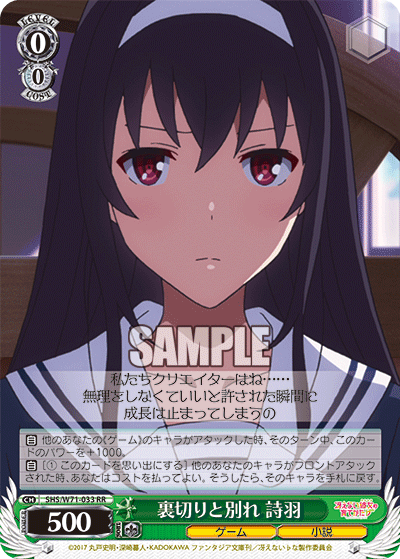
Utaha being free presents another powerful staple returning to Saekano. Players will rejoice now that their memory J.C. is back. I don’t foresee any particular issues with the return of this card. Players will likely use it as another advantage generating card. The primary reason this was banned in the first place was due to the overloading of memory causing games to degenerate into games of compression wars. But now that the memory era is over, I think Utaha can return as just another cheap way to keep your other cards alive and recycle field resources.
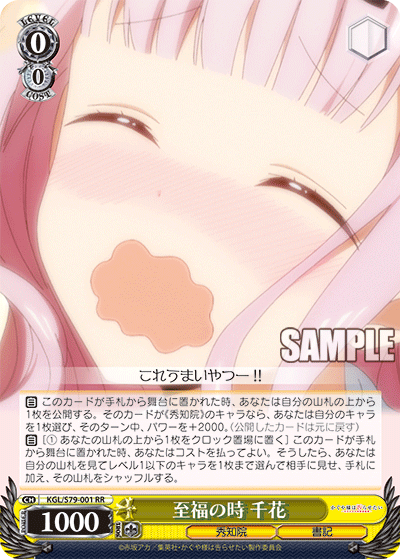
Chika has been freed from her chains of restrictions as well. Compared to the other two on the list, Chika was the least problematic. Kei’s duo utility as a runner and clean-cut gave players far too much advantage. Hayasaka was a recurring drop-search that could be continuously spammed. A cheap play of putting both Kei and Hayasaka in the front row and then clean cutting Hayasaka into the back was far too popular. Chika added consistency to every deck she was in while also potentially pumping power to Kei to ensure she would get her reverse. However, as a stand alone Riki profile, Chika is fine. Similar to Utaha as mentioned above, Chika will likely just be played as another advantage piece in any deck.
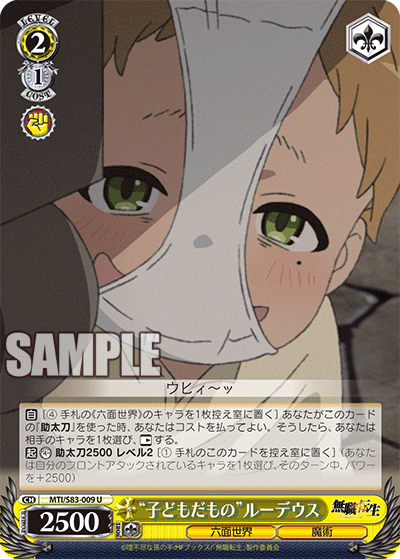
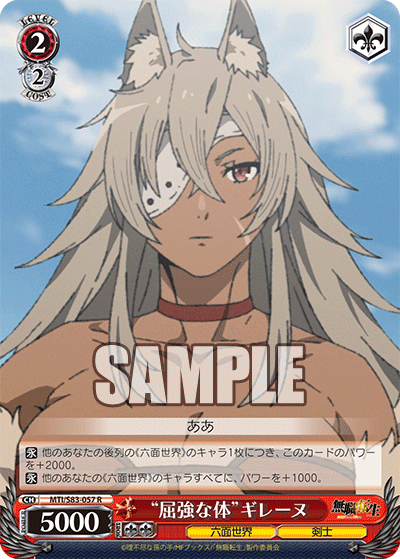
It still baffles me a little bit on the reasoning behind Mushoku’s banning. When Mushoku was at its peak, Ghislaine would be hard walling opponents, allowing the player to generate an enormous amount of resources over the next couple of turns. The rest counter Rudy was great because it gave you an option to use your extra resources while also denying your opponent’s swings and certain combo abilities. However, as the game has progressed, decks are either more than ready to deal with Ghislaine or they simply rush the opposing player with soul damage, making it very difficult for Mushoku to maintain their old stall plan. And this was during the time that Mushoku was banned as well, meaning now, decks are even stronger than before. Mushoku can receive back both Ghislaine and Rudy in the same deck. The standby deck will return to full power, but it won’t be anywhere as strong as it used to be just due to external factors.
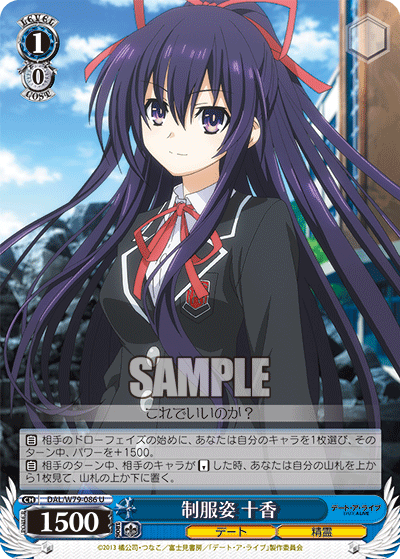
Tohka being removed from the ban list immediately incentives players to return to the old 2/2 Tohka walling target. 1/0 Tohka was obnoxious in working alongside the aforementioned 2/2 Tohka in manipulating your deck. Given that 2/2 Tohka can already go two deep, 1/0 Tohka here gives her a further peek into the deck, letting you look at a total of three cards to potentially set-up your deck for your future draw or to push for a cancel. Furthermore, 1/0 Tohka was key in ensuring 2/2 Tohka would get her reverse as you would use her draw phase pump ability to give 2/2 Tohka another 1500 power during your opponent’s turn. However, with the state of power creep, I am unsure whether or not 2/2 Tohka still remains a large threat. Decks, thanks to Alice, have become somewhat accustomed to dealing with large 2/2 bodies. Given that the runner Adachi Yoshino is still on the restriction list, players can’t exactly swap 2/2 Tohka out of harm’s way either. They will still get their reverse scry assuming players use Adachis to get rid of 2/2 Tohka, but it will also likely only be a one turn ordeal.
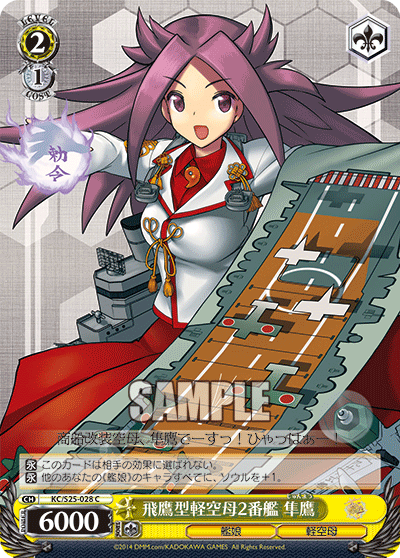
If you haven’t read my article on Jun’you’s raw power back in Kantai’s prime, I suggest you take a look here. Jun’you is probably the most controversial unban on the list and completely unexpected. Jun’you was considered by many as the face of a card that shouldn’t have been printed. They’ve made pseudo versions of her that only affect cards in front rather than Jun’you’s global soul pumping ability. Jun’you also carries a rare hex-proof trait on a backrow card, making it difficult for your opponent to remove her. She’s restricted with two copies in every deck at most, but given that she’s a backrow assist most of the time, players will be unlikely running more than two anyways. Jun’you allows for more weenie-ramming strategies, turning every card into a two soul threat at minimum, but given how the game has changed from her prime, it’s difficult to gauge whether or not she’s still that much of a problem card.
Kantai lacks any standby trigger, making her forcefully played fairly at level 2. The question to ask is if players will consider Jun’you worth a slot in the backrow and that single stock. One of the more played decks, Nelson, already has steep stock costs to perform her ability. However, that is also one of the decks I see that can make use of Jun’you’s soul granting ability since it bolsters both Nelson and her Musashi’s finishing power. We’ll have to see as players begin to brew their new decks with Jun’you in consideration.
Welcome to the end of the ban list. That was a bit of an exhausting write, and congratulations on getting this far. What did you think of the bans? Were they appropriate? What about the unbans? Was Bushiroad too harsh or not harsh enough? What changes would you make?
Do check out WeissTeaTime’s visual chart here to see the updated changes.